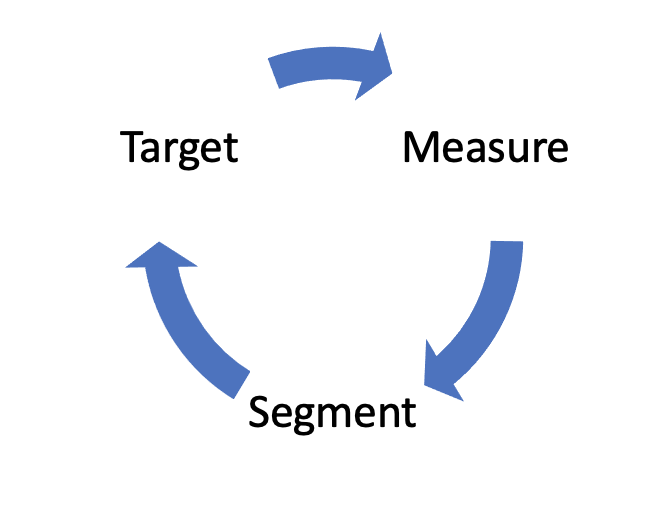Adobe Marketing Cloud is a complex set of software products interweaved together to provide an end-to-end marketing workflow to customers.
key components of Adobe Marketing Cloud
- Adobe Audience Manager
- Adobe Experience Manager
- Adobe Analytics
- Adobe Target
- Adobe Campaign Manager
To understand the role of each of these products, we should first step back and understand a typical marketing workflow and how marketers look at their ongoing operational needs. This blog explores one of the many workflows in marketers’ lives and understands how various products fit into this workflow. A typical Marketing cycle involves:

- Segmenting customers into various categories to decide how to market a particular product or service to each of them.
- Once the customers are segmented, the marketing team crafts the overall
- The campaign is run and measured in real-time as to how users respond to it. It helps compute the holy grail of campaign conversions and further optimize the campaign, content and segmentation approach.
- The entire process is repeated time and again with new ideas every time.
Now, the above-mentioned segmentation, targeting and measurement cycle can be mapped to various products in the Adobe Marketing Cloud.
To understand and segment one’s customers, Adobe’s Audience Manager comes into play. It can consume data from multiple sources, synchronize it and provide a way to segment audiences based on the harmonized data.
The Marketing Team then builds the content and campaigns to target the segments using Adobe Experience Manager. It is a fundamental authoring and management tool for all forms of content and allows the creation of three core entities, sites, forms and assets. It helps in versioning and managing these entities and quickly launching them to the audience. It allows both the composition and creation of new assets as well.
With new content in place, the next step is to create and execute campaigns. Adobe Campaign Manager helps create and manage campaigns. Its multi-channel execution capabilities and deep integration with its segmentation tools make it one of the top products in the campaign execution space.
Adobe Target is another product that helps in highly personalized campaign execution. Its core capability is a 1:1 targeting of content to the audience, assisting marketers in delivering a truly personalized experience. In addition, its ability to integrate with Web/mobile and server-side applications combined with its API first approach, robust reporting & recommendation engines and API make it a reliable tool for the execution of personalized campaigns.
After delivering the campaign, the next step is to measure its effectiveness. Adobe Analytics (erstwhile Omniture analytics) provides the classic clickstream analytics measurement platform to complete the marketing cycle. Being one of the oldest and most powerful products in the customer behaviour analytics space, it provides best in class tools to measure the work done on all other platforms.
The underlying CDP platform provides the bedrock of data on which most of the products execute successfully. The most significant advantage is the benefit of deep integration with the rest of the Adobe products, such as Magento. In addition, the popularity of these products also allows ease of integration with other essential products such as Microsoft Dynamics, Salesforce.com, and SharePoint.
Thus, the Adobe Marketing Cloud, a collection of several adobe products available as a cloud-based suite, enables easy consumption and addresses the diverse needs of the marketing team’s daily workflow.






